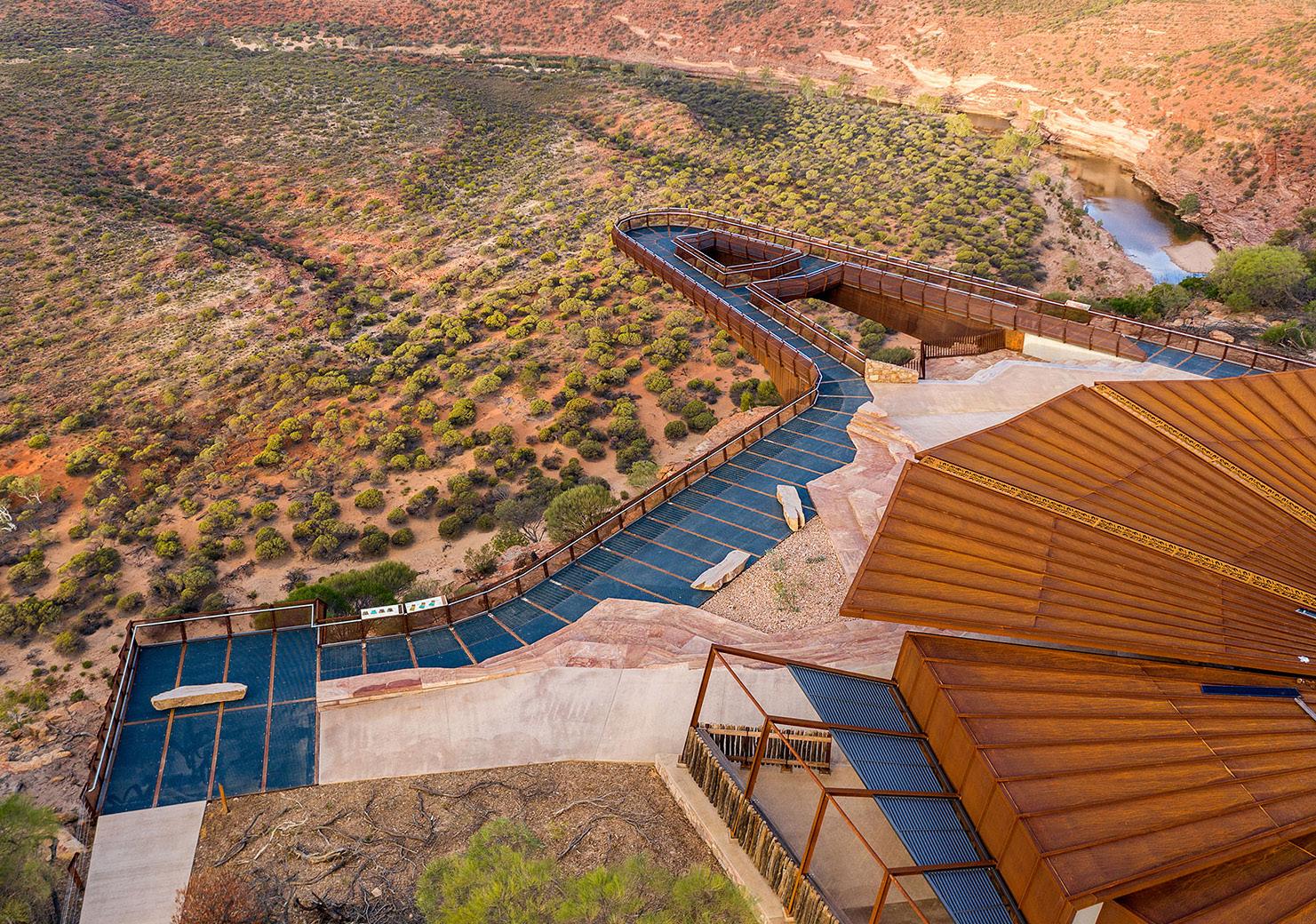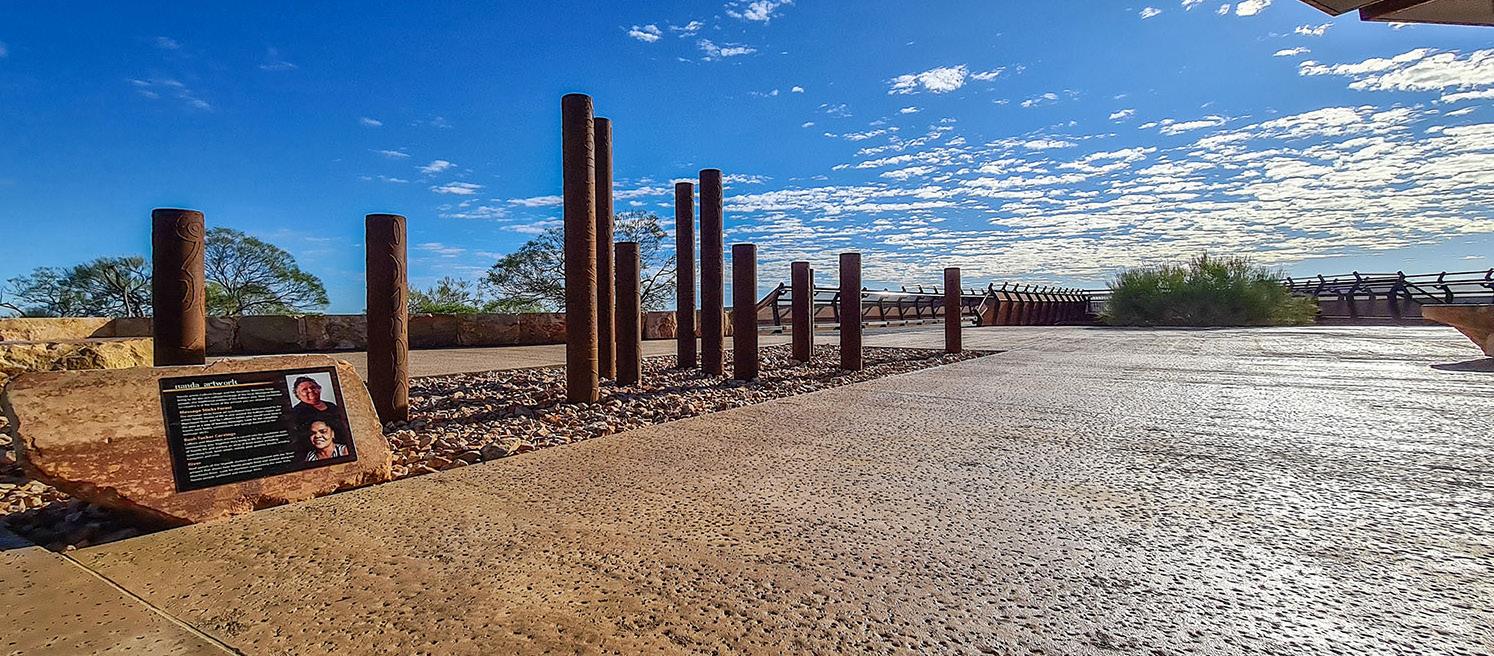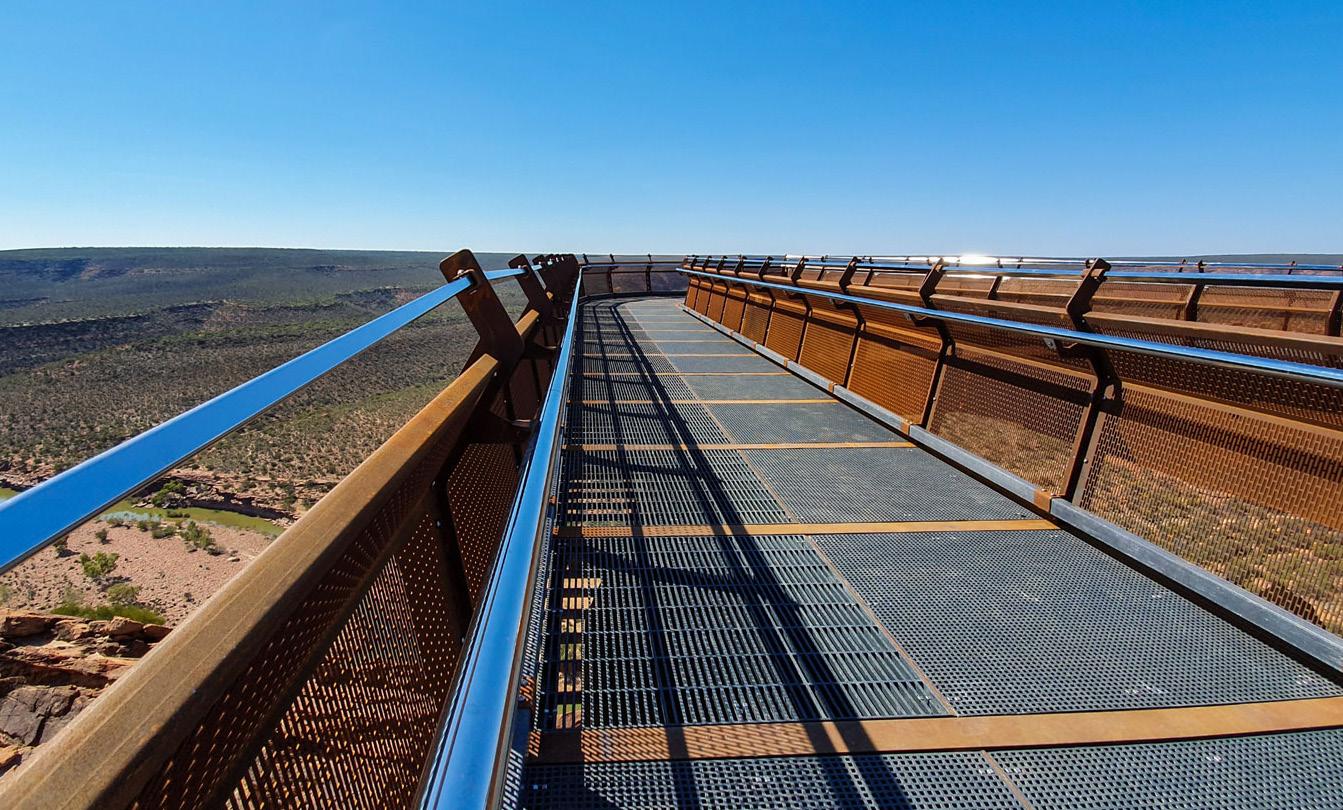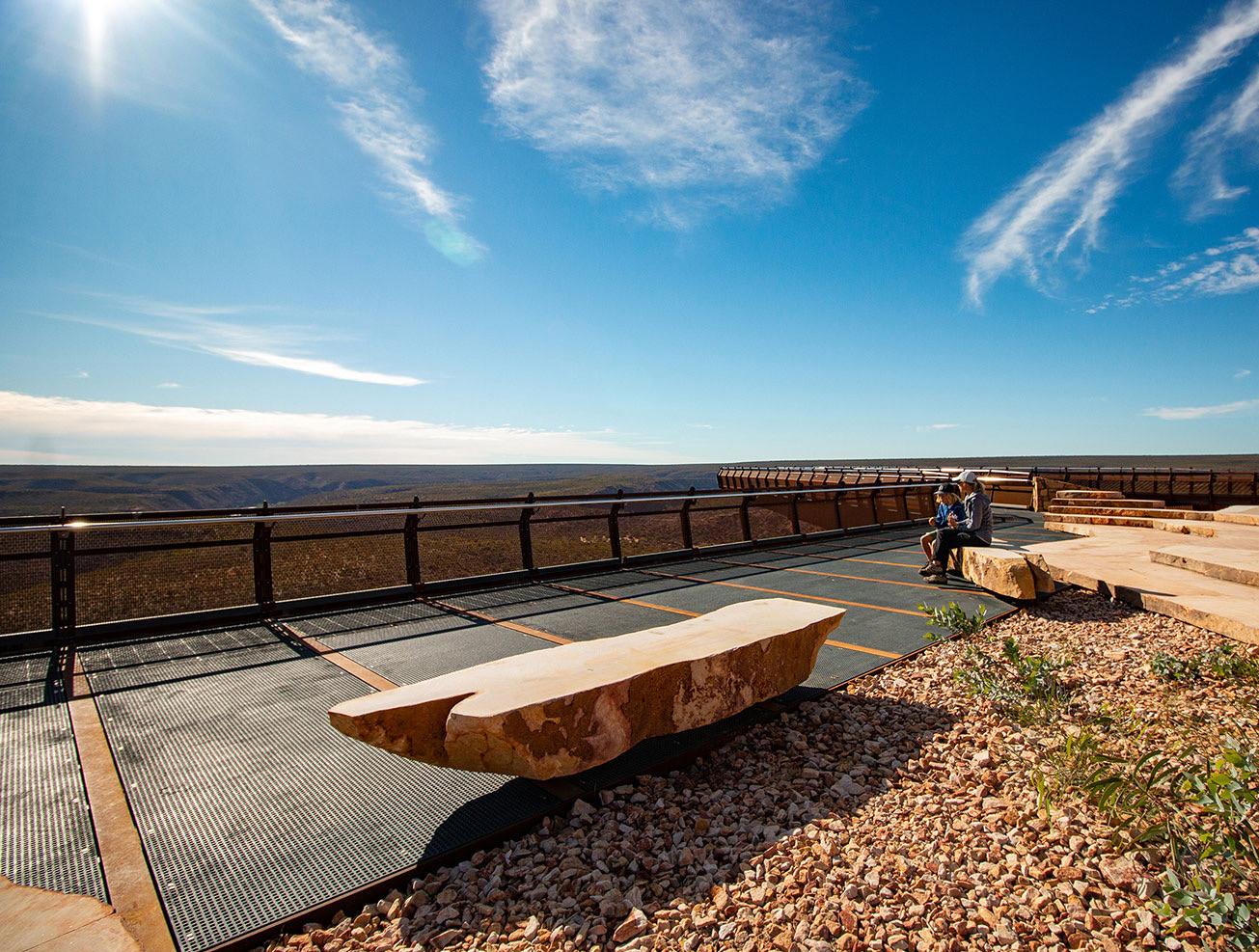
5 minute read
Kalbarri National Park and the Kalbarri Skywalk
In April 2020 the new Kalbarri Skywalk, located in the Kalbarri National Park, opened for visitors.
We took the opportunity to ask Rory Chapple, Department of Biodiversity, Conservation and Attractions and Craig Poletti, Eastman Poletti Sherwood Architects, Geraldton-based Architects for the project, a couple of questions about upgrade works through the Kalbarri National Park.
Advertisement
Can you tell us about the Kalbarri National Park and the recent redevelopments?
Offering both coastal and inland attractions, Kalbarri National Park surrounds the lower reaches of the Murchison River, which cuts a magnificent 80-kilometer gorge through the red and white banded sandstone.
You can experience scenic gorge views from The Loop parking area, Hawks Head and the Ross Graham Lookout and soaring sea cliffs from Red Bluff, Natural Bridge and Island Rock. A 1.2 kilometre section of the Bigurda Trail between Natural Bridge and Island Rock, set along the cliff tops of the coast south of Kalbarri have been improved with sealed paths and an 800 metre boardwalk to provide more accessibility.
Two skywalks with a connecting boardwalk jut 25 metres and 17 metres beyond the rim of the Murchison River Gorge at one of its highest points, at West Loop.
There are designated accessible parking bays, unisex accessible toilets and sealed paths at the coastal and gorge sites.

Photo courtesy of Bocol Constructions Dermot Boyle
What was the initial driver that triggered the concept for a skywalk in the Kalbarri National Park?
We met on the site seven years ago with the regional representatives of Kalbarri National Park to look at what might be able to be done at this site, the highest point above the river in the National Park. Initial concepts and perspective images were prepared for a cantilevered walk extending 10 meters over the edge. This fuelled some interest from the Midwest Development Commission and the project grew to include two skywalks with a kiosk, toilets, shelters, artworks and interpretive signage.
The entire project was then packaged up to include upgrading other sites within the national park including construction of sealed roads and carparks to all sites to improve access for all. Highlights include the upgrade of facilities at Meanarra Hill, now a universally accessible site that looks back out over the Kalbarri township, the Indian Ocean and Murchison River, a complete redevelopment of the Z Bend lookout toilets and shelters.
Has the design of the skywalk required collaboration with a range of stakeholders?
Yes, over a long period of time there was considerable collaboration with the Department of Biodiversity, Conservation and Attractions Parks and Wildlife team, working closely with the traditional owners of the land and the design and construction team (Eastman Poletti Sherwood Architects, Terpkos Engineers, Bocol Constructions and GBSC Yurra) working together to make the project a reality.
What features have been incorporated that have enhanced accessibility around the site and in particular, on the skywalk?
Compliant gradients, path widths and surfaces have been incorporated throughout the skywalk site as an accessible alternative to the natural red sandstone paths provided to the skywalk. Paths have been provided with rest stops and seating, given this is a naturally windy and for much of the year a hot and exposed landscape.
The skywalk structures have been designed with wide apertures throughout the length, to allow visitors to see through the mesh floor and experience the breeze as it rises up. In addition, included throughout the skywalk is an accessible path of travel with smaller gaps and furnished with handrails, allowing all people the opportunity to enjoy the cantilevered structure as it extends out over the Murchison River and gorge below.

Photo courtesy of Bocol Constructions Dermot Boyle

Photo courtesy of Bocol Constructions Dermot Boyle

Photo courtesy of Bocol Constructions Dermot Boyle
Photos courtesy of Bocol Constructions Dermot Boyle

Photo courtesy of Bocol Constructions Dermot Boyle
KAJU YATKA: TAKE A WALK ON THE WILD SIDE
By Rhianna King, Department of Biodiversity, Conservation and Attractions
(sourced from 'LANDSCOPE, magazine, Autumn 2020')
Kalbarri National Park has long been one of Western Australia’s favourite national parks. Its rugged river gorges and stunning coastline provides opportunities for hiking, photography, nature watching, abseiling, swimming, rafting and canoeing, and wildflower spotting. And now, a $24 million redevelopment of the park, including the construction of the spectacular Kalbarri Skywalk, is set to provide improved access and even more reason for visitors to travel to the area and spend time in the local community.
The new facility has been designed with access for all in mind. The path from the carpark is flat and on the same level as the skywalks, so people with prams and wheelchairs can access and enjoy the extraordinary views. And the skywalk precinct has been designed to include an air-conditioned kiosk, where visitors can find a cold drink and some respite from the heat; as well as wheelchair accessible toilets and shaded areas. In addition, visitors can now drive anywhere in the park without needing a four-wheel drive as all roads are now sealed and suitable to two-wheel-drive vehicles.
DBCA worked with representatives from the Nanda people who assisted with the interpretation of the Nanda story. Nanda words are shown in English and are raised so the blind can fell each word. Nanda artwork can be touched and felt, the Message Stick forest has carvings on metal poles telling stories of camping along the Murchison River.
Skywalk One extends 25 metres out over the edge of the gorge (longer than the Grand Canyon) and Skywalk Two is 17 metres, both 100m above the Murchison River. The deck is constructed of fibreglass-reinforced plastic mesh allowing visitors to see through as well as feel the breeze rising through from below.
“Being able to take in the magnificent scenery (so long denied to those of us with disabilities due to a largely inaccessible environment) I felt so much pride for all those involved in creating this wonderful facility, for turning a vision into a reality, for acknowledging and embracing Nanda people in its creation, for the ease of access embedded into the design making it something everyone can enjoy.
It also made me happy that when I visited four days after it was opened - a total stranger who also happened to be a wheelchair user was smiling at me and we shared our joy that we were out there just doing our thing alongside our loved ones and everyone else - as we should be able to but so often are not.
Congratulations to everyone involved - it is a truly magnificent achievement.”
Chris Kerr

Photo courtesy of Department of Biodiversity Conservation and Attractions










